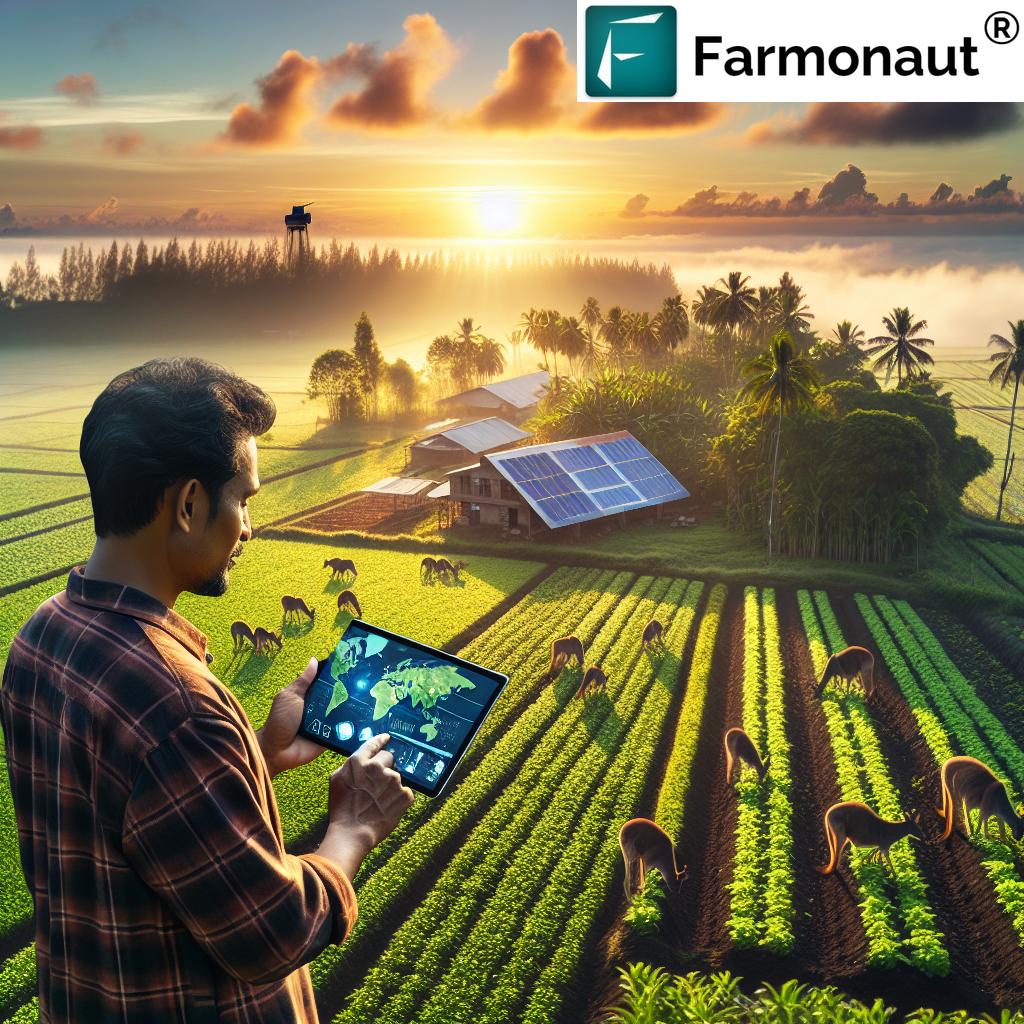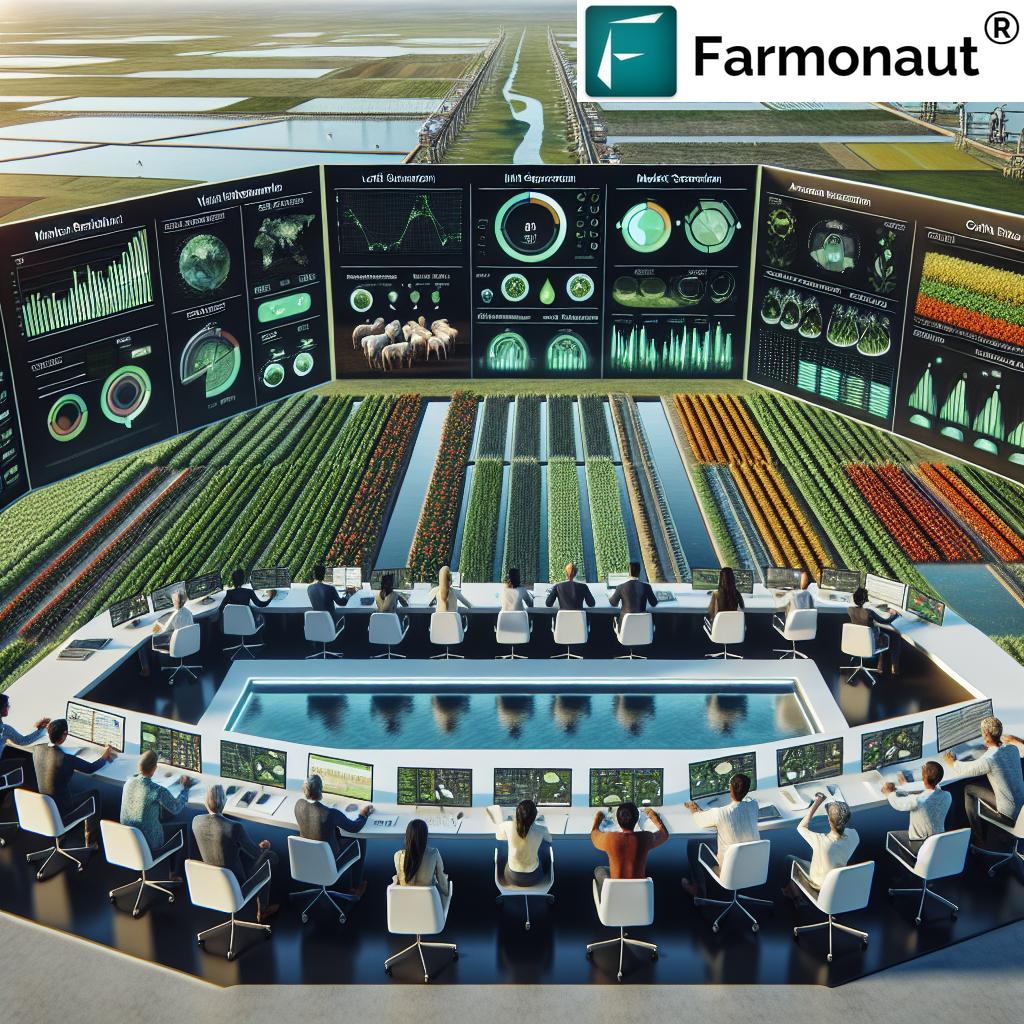2024 Agtech Revolution: Kangaroo Island Farmers Embrace Digital Farming Solutions for Sustainable Agriculture
“Kangaroo Island farmers have adopted over 15 digital farming solutions in 2024, boosting sustainable agriculture practices.”
As we venture into 2024, we’re witnessing a remarkable transformation in the heart of Australian agriculture. Kangaroo Island, known for its pristine landscapes and rich farming heritage, is now at the forefront of a digital revolution that’s reshaping the future of sustainable farming. In this comprehensive exploration, we’ll delve into the innovative agricultural technology solutions and sustainable farming practices that are taking root in this rural paradise.
The Dawn of Digital Farming on Kangaroo Island
Kangaroo Island’s agricultural community is embracing change with open arms. The integration of digital farming solutions is not just a trend; it’s a necessity in the face of evolving market demands and environmental challenges. Let’s explore how these innovations are making waves across the island’s farms.
- Precision Agriculture Software
- Satellite Imagery for Crop Monitoring
- Advanced Weather Forecasting Apps
- Livestock Management Systems
- Carbon Initiative Platforms
Each of these technologies plays a crucial role in transforming traditional farming methods into data-driven, efficient operations. But what’s driving this change, and how are farmers adapting?
The Catalyst for Change: Climate Resilience and Market Trends
The agricultural landscape of Kangaroo Island is evolving rapidly, driven by two primary factors: the need for climate-resilient agriculture and shifting market trends. Farmers are increasingly turning to digital solutions to navigate these challenges.
Climate Resilience: With weather patterns becoming more unpredictable, farmers are leveraging advanced weather forecasts and satellite data to make informed decisions about planting, irrigation, and harvesting. This proactive approach helps mitigate risks associated with extreme weather events.
Market Trends: Consumer demand for sustainably produced food is on the rise. Kangaroo Island farmers are responding by adopting technologies that enable them to track and improve their sustainability metrics, from water usage to carbon footprint.

Precision Agriculture: The Game Changer
At the heart of this agricultural revolution is precision agriculture. This approach uses data from various sources to optimize farming practices, resulting in higher yields, reduced resource usage, and minimized environmental impact.
Satellite Imagery and Crop Health Monitoring: Farmers on Kangaroo Island are now able to monitor their crops with unprecedented detail. Satellite imagery provides regular updates on crop health, allowing for early detection of issues such as pest infestations or nutrient deficiencies.
One company at the forefront of this technology is Farmonaut. Their satellite-based crop health monitoring system offers farmers real-time insights into vegetation health (NDVI), soil moisture levels, and other critical metrics. This data-driven approach enables farmers to make informed decisions about irrigation, fertilizer usage, and pest management, ultimately optimizing crop yields and reducing resource wastage.
AI-Powered Advisory Systems: Artificial Intelligence is revolutionizing farm management. AI systems analyze vast amounts of data to provide personalized recommendations for each farm. For instance, Farmonaut’s Jeevn AI advisory system delivers real-time insights, weather forecasts, and expert crop management strategies tailored to individual farm conditions.
Livestock Management Goes Digital
The digital revolution isn’t limited to crop farming. Kangaroo Island’s livestock farmers are also benefiting from technological advancements.
- RFID Tagging: Electronic identification tags help farmers track individual animals, monitor their health, and manage breeding programs more effectively.
- Automated Feeding Systems: These systems ensure optimal nutrition for livestock while reducing labor costs.
- Health Monitoring Wearables: Devices that track vital signs and movement patterns help detect health issues early, improving animal welfare and productivity.
These digital tools are transforming livestock management, making it more efficient, humane, and profitable.
Weather Forecasting: A Farmer’s Crystal Ball
In agriculture, timing is everything. Accurate weather forecasts can make the difference between a bumper crop and a failed harvest. Kangaroo Island farmers are now equipped with sophisticated weather forecasting tools that provide hyperlocal predictions.
These advanced weather apps integrate data from multiple sources, including satellite imagery and ground-based sensors, to offer precise forecasts. Farmers use this information to plan everything from planting dates to harvest times, optimizing their operations and reducing weather-related risks.
Carbon Initiatives: Farming for the Future
As global concern about climate change grows, Kangaroo Island farmers are taking proactive steps to reduce their carbon footprint and even contribute to carbon sequestration.
Carbon Footprint Tracking: Digital platforms are helping farmers monitor and reduce their greenhouse gas emissions. For example, Farmonaut offers carbon footprint tracking that provides real-time data on emissions, allowing agribusinesses to take steps towards sustainability and compliance with environmental regulations.
Carbon Credit Programs: Some farmers are participating in carbon credit schemes, implementing practices that sequester carbon in the soil. Digital tools help them measure and verify these efforts, potentially opening up new revenue streams.
The Role of Farm Management Software
Integrating all these digital tools and data streams can be challenging. This is where comprehensive farm management software comes into play. These platforms serve as a central hub for all farm operations, from crop planning to financial management.
Key features of modern farm management software include:
- Field mapping and crop rotation planning
- Inventory management for seeds, fertilizers, and other inputs
- Financial tracking and reporting
- Integration with IoT devices and sensors
- Data analytics and visualization tools
By centralizing all this information, farmers can make more informed decisions and run their operations more efficiently.
Community Support and Knowledge Sharing
The digital revolution on Kangaroo Island isn’t just about individual farms; it’s transforming the entire rural community. Digital platforms are facilitating knowledge sharing and community support in unprecedented ways.
- Online Forums: Farmers are connecting through online forums to share experiences, ask questions, and offer advice.
- Virtual Workshops: Agricultural experts are conducting online workshops, bringing the latest knowledge and techniques directly to farmers’ homes.
- Digital Marketplaces: Online platforms are connecting farmers directly with consumers, opening up new market opportunities.
These digital connections are strengthening the farming community, fostering innovation, and ensuring that no farmer is left behind in the technological revolution.
Challenges and Opportunities
While the benefits of digital farming are clear, the transition isn’t without its challenges. Some of the hurdles Kangaroo Island farmers are facing include:
- Internet Connectivity: Reliable high-speed internet is crucial for many digital farming tools. Improving rural connectivity is an ongoing priority.
- Digital Literacy: Some farmers, particularly older generations, may struggle with new technologies. Training programs are essential to bridge this gap.
- Data Privacy and Security: As farms become more data-driven, ensuring the security and privacy of this information is paramount.
- Initial Investment: While digital tools can lead to long-term savings, the upfront costs can be significant for some farmers.
Despite these challenges, the opportunities presented by digital farming far outweigh the obstacles. The potential for increased productivity, sustainability, and profitability is driving continued adoption and innovation.

The Future of Farming on Kangaroo Island
As we look to the future, it’s clear that the digital revolution on Kangaroo Island is just beginning. Emerging technologies like blockchain for supply chain traceability, drone technology for precision spraying, and advanced robotics for harvesting are on the horizon.
Farmonaut, for instance, is already implementing blockchain-based product traceability solutions. This technology ensures that every stage of the product’s journey, from farm to consumer, is transparent and secure, enhancing trust and reducing fraud in supply chains.
“Satellite data applications have increased crop yield predictions by 30% for Kangaroo Island farmers using precision agriculture techniques.”
The integration of these technologies promises to further transform farming on Kangaroo Island, making it more efficient, sustainable, and resilient in the face of future challenges.
Comparison: Digital Farming Solutions Adoption on Kangaroo Island
| Technology | Adoption Rate (%) | Primary Benefit | Challenges | Environmental Impact |
|---|---|---|---|---|
| Precision Agriculture Software | 65% | Optimized resource use | Learning curve | High Positive Impact |
| Satellite Imagery for Crop Monitoring | 80% | Early issue detection | Data interpretation | Medium Positive Impact |
| Weather Forecasting Apps | 90% | Improved planning | Connectivity issues | Medium Positive Impact |
| Livestock Management Systems | 55% | Enhanced animal welfare | Initial setup costs | Medium Positive Impact |
| Carbon Initiative Platforms | 40% | New revenue streams | Complex regulations | High Positive Impact |
Conclusion: A New Era for Kangaroo Island Agriculture
The agricultural technology revolution on Kangaroo Island is more than just a series of technological upgrades; it’s a fundamental shift in how farming is approached. By embracing digital farming solutions, Kangaroo Island farmers are not only improving their productivity and profitability but also leading the way in sustainable agriculture practices.
As we continue to monitor these developments, it’s clear that the future of farming on Kangaroo Island is bright, innovative, and deeply rooted in the island’s commitment to sustainability and excellence in agriculture.
FAQs
- Q: How are digital farming solutions improving sustainability on Kangaroo Island?
A: Digital farming solutions are enhancing sustainability by optimizing resource use, reducing waste, and enabling precise application of inputs like water and fertilizers. - Q: What are the main challenges farmers face in adopting new technologies?
A: The primary challenges include initial investment costs, internet connectivity issues, and the need for training to use new technologies effectively. - Q: How is satellite imagery benefiting Kangaroo Island farmers?
A: Satellite imagery provides real-time data on crop health, enabling early detection of issues and more precise management of fields. - Q: What role do carbon initiatives play in Kangaroo Island’s agriculture?
A: Carbon initiatives are helping farmers reduce their environmental impact and potentially create new revenue streams through carbon credit programs. - Q: How is the rural community of Kangaroo Island adapting to these technological changes?
A: The community is adapting through knowledge sharing, online forums, and virtual workshops, fostering a collaborative approach to digital adoption.
For those interested in exploring cutting-edge agricultural technology solutions, consider checking out Farmonaut’s offerings:
Access Farmonaut’s advanced farm management solutions:
Explore Farmonaut’s API for developers:
Farmonaut API
API Developer Docs
Download Farmonaut’s mobile apps:


Farmonaut Subscriptions
As we continue to witness the evolution of agriculture on Kangaroo Island, it’s clear that digital farming solutions are not just a passing trend but a fundamental shift in how we approach food production. The integration of technologies like satellite imagery, AI-driven advisory systems, and blockchain-based traceability is setting new standards for efficiency, sustainability, and transparency in agriculture.
The journey of Kangaroo Island’s farmers serves as an inspiring example of how rural communities can embrace innovation to overcome challenges and thrive in a rapidly changing world. As we look to the future, it’s exciting to imagine the new possibilities that will emerge as technology continues to advance and farmers find new ways to harness its power.
For those interested in staying updated on the latest developments in agricultural technology and sustainable farming practices, we encourage you to follow reputable agricultural websites, participate in rural events, and engage with your local farming community. The revolution in digital farming is ongoing, and there’s never been a more exciting time to be part of the agricultural sector.
As we conclude this exploration of the 2024 Agtech Revolution on Kangaroo Island, we’re reminded of the resilience and ingenuity of farmers who are at the forefront of this transformation. Their willingness to adapt and innovate ensures that Kangaroo Island will continue to be a beacon of sustainable and productive agriculture for years to come.
Whether you’re a farmer looking to adopt new technologies, a consumer interested in sustainable food production, or simply someone fascinated by the intersection of technology and agriculture, the story of Kangaroo Island’s digital farming revolution offers valuable insights and inspiration. As we move forward, let’s continue to support and celebrate the farmers and innovators who are shaping the future of agriculture, one digital solution at a time.



